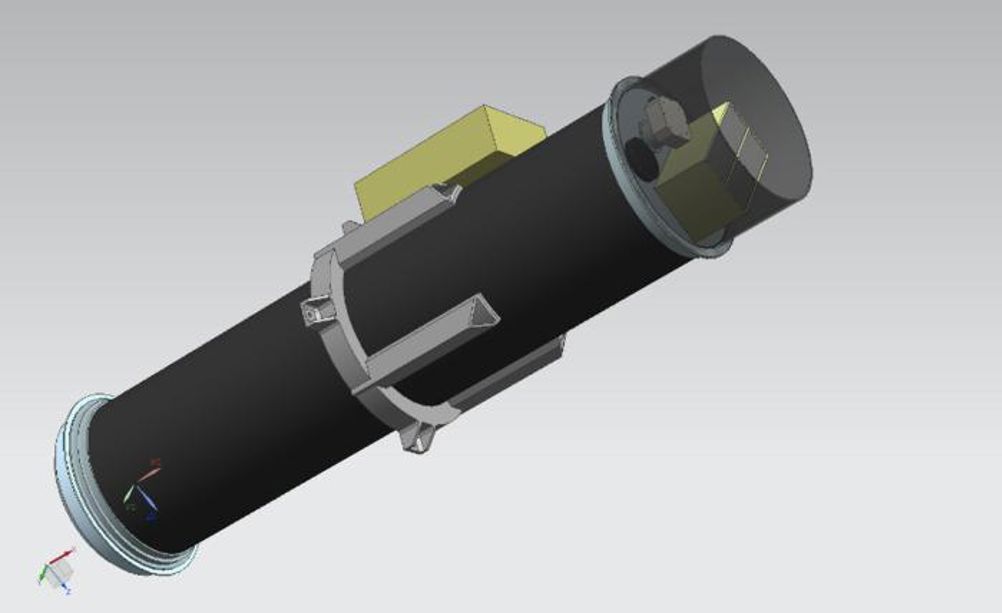Almost £500,000 in funding has been granted by the UK Space Agency to two teams based at Space Park Leicester, Leicester University’s £100m science and innovation park.
The grant will support scientists in developing the proposals for two satellites that would examine how activity in a star’s corona, such as the solar wind, impacts their planets and the environment in which they orbit.
Stellar winds can directly affect exo-planetary environments and control the flow of material and flux of cosmic rays from the Galactic environment, which have a potential influence on planetary climate. Stars also recycle material back into the interstellar medium - the matter and radiation that exists in the space between the star systems - enriching galactic metal content.
According to the Leicester University researchers, these processes can inform us about the habitability of a star system’s planets and the evolution of stars and galaxies, but are currently poorly understood.

The SIRIUS mission, which has received £295,200 in funding, is a high-resolution extreme ultraviolet (EUV) spectroscopy instrument that would perform a wide range of astrophysical studies of nearby stars and the interstellar medium (ISM).
The researchers said that hot gases in the 105-107 kelvin range are associated with these processes and can be investigated in the EUV range, which is not covered by any other existing or planned instrument.
SIRIUS would perform unique EUV spectroscopy to diagnose the density, temperature, composition, structure, and dynamics of these hot astrophysical plasmas in the coronal activity of stars in our neighbourhood.
In a statement, Professor Martin Barstow, Leicester’s Department of Physics and Astronomy and Director of Strategic Partnerships at Space Park Leicester, said: “SIRIUS is a very exciting mission scientifically, but also shows UK leadership in a pioneering approach to lowering the cost of space science. SIRIUS could be the first UK-led space science mission since Ariel 6 in 1979.”
SIRIUS is an international proposal led by Leicester University in collaboration with Germany’s Tubingen University, Spain’s Complutense University, and Belgium’s University of Liege. A partnership with the UAE’s University of Sharjah is also being developed.
Support for development of the science programme is being delivered by Cambridge University and the Open University; the spacecraft and operations will be provided by In-Space Missions, a subsidiary of BAE Systems Digital Intelligence; and the telescope deployment system, allowing launch of a compact telescope package, will be provided by Oxford Space Systems.
Augmented reality video of Elfen.
The Elfen mission will explore the Earth’s magnetosphere, the region of space around the planet affected by its magnetic field. Elfen would measure the composition of solar wind-heavy ions upstream, and also the composition of ions found on the nightside of Earth’s magnetosphere.
These ions are atoms such as hydrogen-like or helium-like carbon, oxygen, and nitrogen, that are nearly or fully-stripped of electrons that can cause X-rays to be emitted near Earth and also flow into and out of the Earth’s upper atmosphere.
Receiving £200,000 in funding from the UK Space Agency, Elfen is a CubeSat mission concept set to carry a spectrometer built by Michigan University and a magnetometer built by Imperial College London in conjunction with Oxford Space Systems. Its one-year mission would see it orbit at a distance of 12 Earth radii (around 76,000km).
The deep space region that Elfen could explore is expected to increase in significance due to growing interest in the impact of space weather and increased interest in travelling through near-Earth space to the moon.
Leicester will also lead this mission, in partnership with Warwick University, LATMOS, the University of Bergen, UCL’s Mullard Space Science Systems, IRAP, and the University Centre in Svalbard.
More from Aerospace











Guest blog: exploring opportunities for hydrogen combustion engines
"We wouldn't need to pillage the environment for the rare metals for batteries, magnets, or catalisers". Batteries don't use rare...